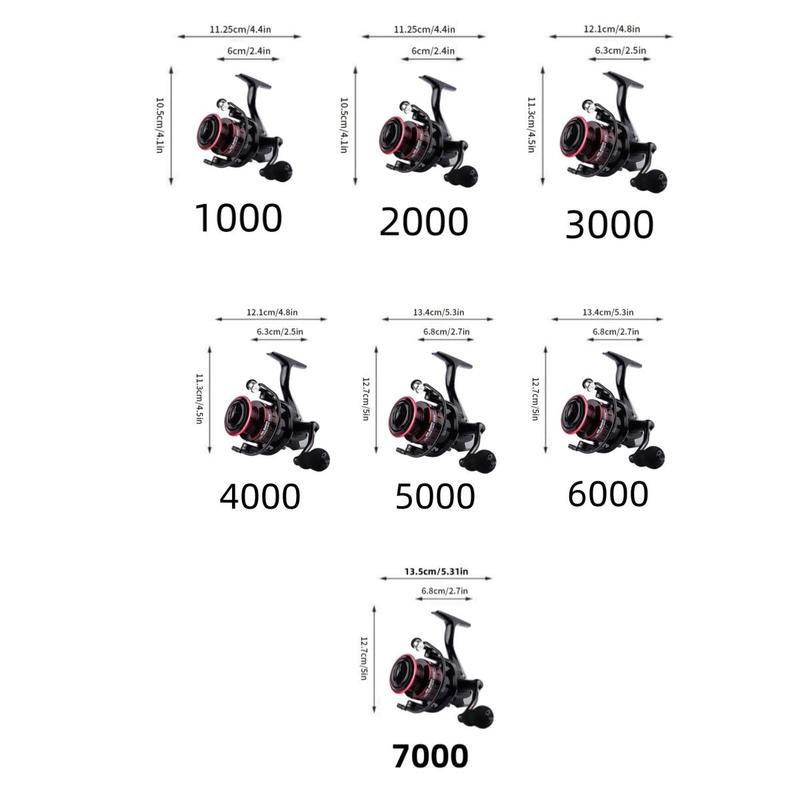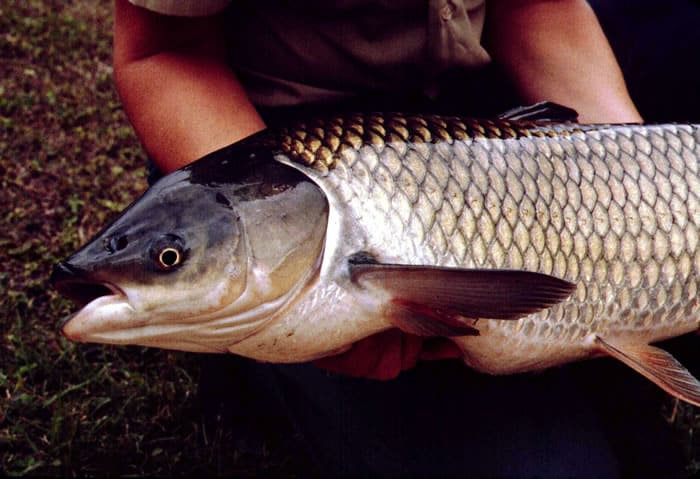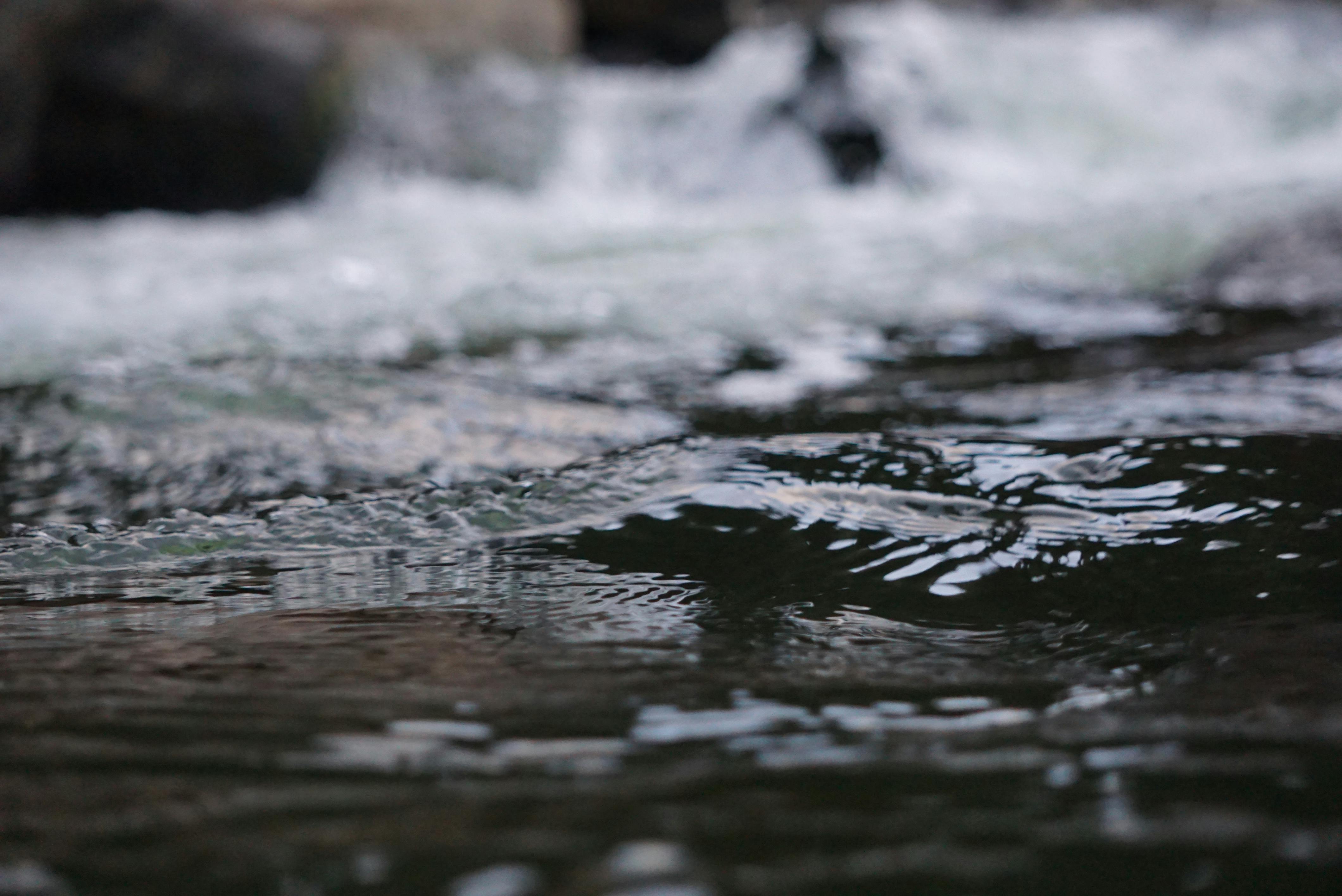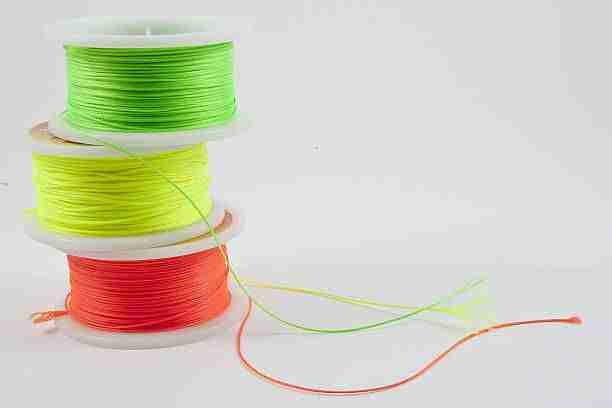
Feeder line. What is the best line for a feeder? Trabucco, Shimano, Sufix, Mikado, Owner, Colmic, Balsax, Gamakatsu, Maver and Salmo

15 min read
When it comes to feeder fishing, having the right line can make a significant difference in your angling success. With countless options available in the market, it can be overwhelming to choose the best line for your feeder setup.
In this article, we will explore some of the top brands like Trabucco, Shimano, Sufix, Mikado, Owner, Colmic, Balsax, Gamakatsu, Maver, and Salmo, to help you understand the features and qualities that make them stand out in the world of feeder fishing. Whether you are a seasoned angler looking to upgrade your current line or a newbie eager to learn about the best options, continue reading to find out which line might prove to be the perfect fit for your feeder fishing needs.
Feeder line. What is the best line for a feeder?
Some anglers may wonder why they should use a feeder line when braided lines have gained popularity. While braided lines have their advantages, many experienced feeder anglers still prefer the use of specialized feeder lines.
These lines are designed specifically for feeder fishing and have unique characteristics that cater to the requirements of this fishing technique.
Almost every fishing line manufacturer has one, two or even more series of special feeder lines in its assortment . Different diameters, colors, stiffness, technology used, and raw materials - all make you think when choosing not only a novice feederist, but also an experienced angler. And it’s really not easy to make a choice. Many well-known brands offer their best designs. In today’s review, we will look at the top ten feeder lines from manufacturers such as: Trabucco, Shimano, Sufix, Mikado, Owner, Colmic, Balsax, Gamakatsu, Maver and Salmo .
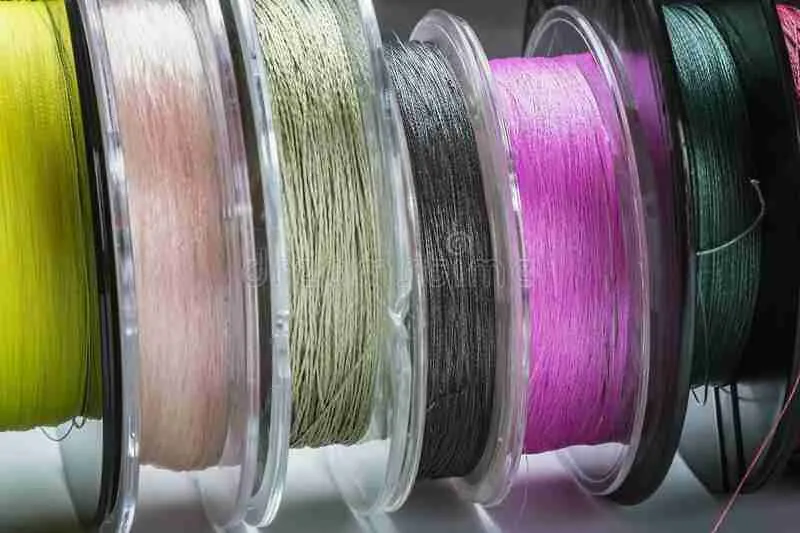
Here, many experienced feeder anglers will ask: “ Why actually use a feeder line? After all, everyone has been using braided line for a long time. ” The question is certainly relevant. But the answer will be: “Not all. Many use feeder line and are very satisfied.”
Choosing the Best Feeder Line: Choosing the best feeder line depends on several factors such as personal preference, fishing conditions, and target species. It’s important to consider the following aspects when selecting a feeder line:
-
Diameter: Select a diameter that matches the weight of your feeder and the fish you’re targeting. Thicker lines provide more strength, while thinner lines offer better sensitivity.
-
Strength and Durability: Look for lines that are strong and durable to handle the demands of feeder fishing, including the weight of the feeder and potential encounters with underwater obstacles.
-
Low Memory: Feeder lines with low memory will have minimal coiling, allowing for better casting accuracy and fish detection.
-
Visibility and Color Options: Consider the visibility of the line in different water conditions. Transparent or low-visibility colors can be advantageous in clear water, while high-visibility colors can help detect bites in murky water.
-
Quality and Brand Reputation: Choose feeder lines from reputable brands known for their high-quality fishing lines. Consult with experienced anglers and read reviews to gather insights on the performance and reliability of different lines.
What is better fishing line or braided line?
We have already devoted a separate article “ Which is better than braided or fishing line ”, where we found out the advantages and disadvantages of monofilament and braided fishing line. And we made sure that both the can be used in certain conditions of fishing on the feeder.
The main advantage of a braided line, which is not so easy to argue with, is its sensitivity. Especially this property plays an important role not even when transmitting a bite, which is of course important, but when tapping the bottom to find a suitable fishing spot.
But the feeder line also has its trump cards. The first is the price, which you will agree is not so unimportant. Since you often have to catch on the feeder on the edges, among the colonies of shells, line cuts are often found. And braided line is just more prone to such damage than regular mono. And it’s a pity to lose several meters of braid on the edge.
As for sensitivity, then again you need to look at what distances the fishing is going on. With a casting distance of about 20-30 meters, there is no noticeable difference in sensitivity, whether we use braid or monofilament.
And last but not least, the difference. This is the presence of extensibility in the fishing line . It is she who gives more chances to the feeder when playing large fish. This stretch cushions the jerks of the fish and can sometimes make a difference when fighting trophy fish. Especially the use of monofilament is justified on paid carp ponds. In such conditions, the bite of the fish will be already perfectly noticeable, and the process of fighting itself comes out on top.
What diameter of fishing line to put on the feeder?
When determining the diameter of the fishing line for feeder fishing, it is important to consider the target fish species and the desired breaking load. The breaking load indicated on the reel tells us the maximum load a dry fishing line without knots can handle.
To ensure strength and reliability, it is crucial to choose a fishing line with an appropriate breaking load. It is worth noting that the strength of the line can be reduced due to knots, wetness, exposure to the sun, and wear and tear.
When casting feeders weighing 80 to 120 grams filled with bait, and considering the increased requirements for strength, I would not recommend using a main feeder line diameter below 0.18mm. However, using a diameter within the range of 0.18mm to 0.24mm can help prevent the feeder from shooting during casting. In such cases, it is advisable to use a shock leader for the feeder, which we discussed in a previous article on our website.
It is essential to consider the size of the rings on the feeder tips when using a shock leader. The knot used should pass smoothly through the feeder rings with minimal impact on casting distance.
On our site, there is a whole article “ fishing knots”knitting knots for fishing” ”, where we have determined which fishing knots are the strongest and have the least impact on the ultimate breaking value. And they found that the best knot reduces strength by at least 10%. We add here that a wet fishing line loses its strength by another 30%. Plus wear and tear, exposure to the sun…
When fishing on a feeder, it is often necessary to throw feeders and 80 and 120 grams stuffed with bait, and this gives increased requirements for strength.
On the other hand, the larger diameter of the line creates greater windage when fishing in the current. Which forces the use of heavier feeders.
I would not recommend using a main feeder line diameter below 0.18. On diameters of 0.18-0.24 mm, to avoid shooting the feeder when casting, you can use a shock leader for the feeder “how to knit shock leader”, which we discussed in detail in a previous article on our website.
As we know, small-diameter rings are used on feeder tips. If you use a shock leader when fishing on a feeder, then you need to learn how to tie line to line with the correct knot. The knot should pass as freely as possible through the feeder rings and have the least impact on the casting distance of the feeder trough.
Breaking load is often denoted in pounds (lb), with each pound approximately equal to 0.45 kilograms (kg). As a rough guideline, you can calculate the required breaking load by considering 1lb of breaking load for every 10 grams of feeder weight. For example, a Light feeder would typically require around 6lb breaking load, while an Extra Heavy feeder might require around 15lb breaking load.
You can roughly calculate the required strength as follows: for every 10 gr. feeders take 1lb of fishing line strength. And we get that 6 lb is enough for a Light feeder, and 15 lb is enough for an Extra Heavy feeder.
But it must be remembered that one value of the breaking load is indicated on the reel with fishing line, but in practice, it is always less. Due to the fact that any monofilament wears out rather quickly after each fishing it is necessary to cut off the first few meters of it.
Convert lb to kg
Here are the most common values of the ratio of pounds and kilograms:
| Test lb/kg | Test lb/kg | Test lb/kg | Test lb/kg | Test lb/kg |
| 2lb / 0.907kg | 7lb / 3.18kg | 16lb / 7.26kg | 25lb / 11.34kg | 55lb / 24.95kg |
| 3lb / 1.36kg | 7lb / 3.18kg | 17lb / 7.71kg | 26lb / 11.79kg | 60lb / 27.22kg |
| 3.5lb / 1.59kg | 8lb / 3.63kg | 18lb / 8.16kg | 30lb / 13.61kg | 65lb / 29.48kg |
| 4lb / 1.81kg | 10lb / 4.54kg | 19lb / 8.62kg | 32lb / 14.52kg | 66lb / 29.94kg |
| 4.5lb / 2.04kg | 11lb / 4.99kg | 20lb / 9.07kg | 33lb / 14.97kg | 80lb / 36.29kg |
| 5lb / 2.27kg | 12lb / 5.44kg | 21lb / 9.53kg | 37lb / 16.78kg | 100lb / 45.36 |
| 5.5lb / 2.49kg | 13lb / 5.90kg | 22lb / 9.98kg | 40lb / 18.14kg | |
| 6lb / 2.72kg | 15lb / 6.80kg | 24lb / 10.89kg | 50lb / 22.68kg |
The best fishing line for feeder
What is the difference between a feeder line and a regular line? This is primarily its rigidity , it should have significantly less extensibility than conventional monofilament.
So, the Feeder Fishing website presents an overview, in our opinion, of the best feeder monofilaments from ten manufacturers. In this review, we will consider the advantages and disadvantages of feeder and universal lines with reduced stretch, suitable for feeder fishing.
As you will see below, in most cases there are more disadvantages than advantages. This is because when testing something, first of all, they talk about shortcomings. The fewer of them, the closer the quality of the product to the required parameters. And the compliance of the monofilament with our standard requirements cannot be its advantage.
For example, the correspondence of the practical diameter to the declared one (zero difference or less than 0.05, with a diameter greater than 0.2) cannot be a virtue. But the discrepancy between the diameters is already a disadvantage.
Well, enough theory, let’s proceed to the analysis:
Shimano feeder lines
Opens our review, such a well-known brand of[fishing tackle as Shimano. Despite the low prices, the tackle of this company is very popular among fishing enthusiasts.
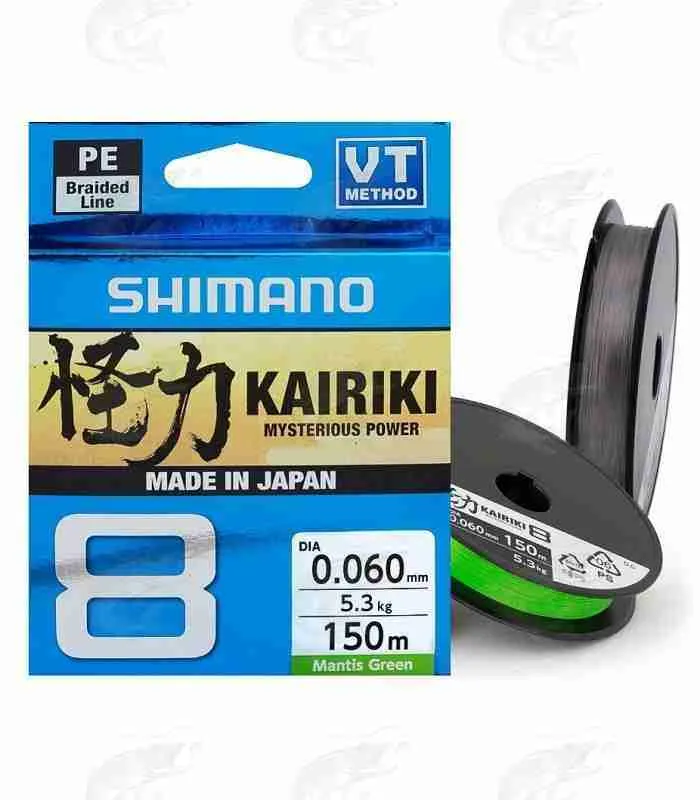
This manufacturer offers us a Shimano Technium feeder. Its extensibility is only about 12%. According to the manufacturer, it “has a three-layer structure” and allegedly occupies an intermediate position between “monofilament and braided cord.”
It is difficult to imagine such a situation, but as practice shows, the rigidity of this fishing line is quite suitable for feeder fishing. Introduced by Shimano Technium in 200m and 300m windings.
If the price suits you, then you can safely opt for the Technium series. It will last 3-4 years and is perfect for a feeder.
There is also a camo mono from this Shimano Technium Tribal series
Advantages of Shimano Technium:
- real low stretch;
- high rigidity;
- real durability, almost higher than that of lines from other manufacturers;
- diameter corresponds to the declared;
Flaws:
- high price. The price is about 3-5 times higher than similar lines from other manufacturers. For this money it is quite possible to buy an inexpensive cord;
- a large number of low-quality fakes. You need to buy it in trusted branded stores;
- in our opinion, a fishing line with a diameter of less than 0.2 has a high memory for twisting. When loosened, for example when filling the feeder, the line can twist around the rings of the feeder tip.
Feeder lines from Trabucco
Trabucco , in our opinion, is one of the most popular monofilament and line manufacturers among anglers. A wide range of products offered and a low price - this is the main trump card of this brand.
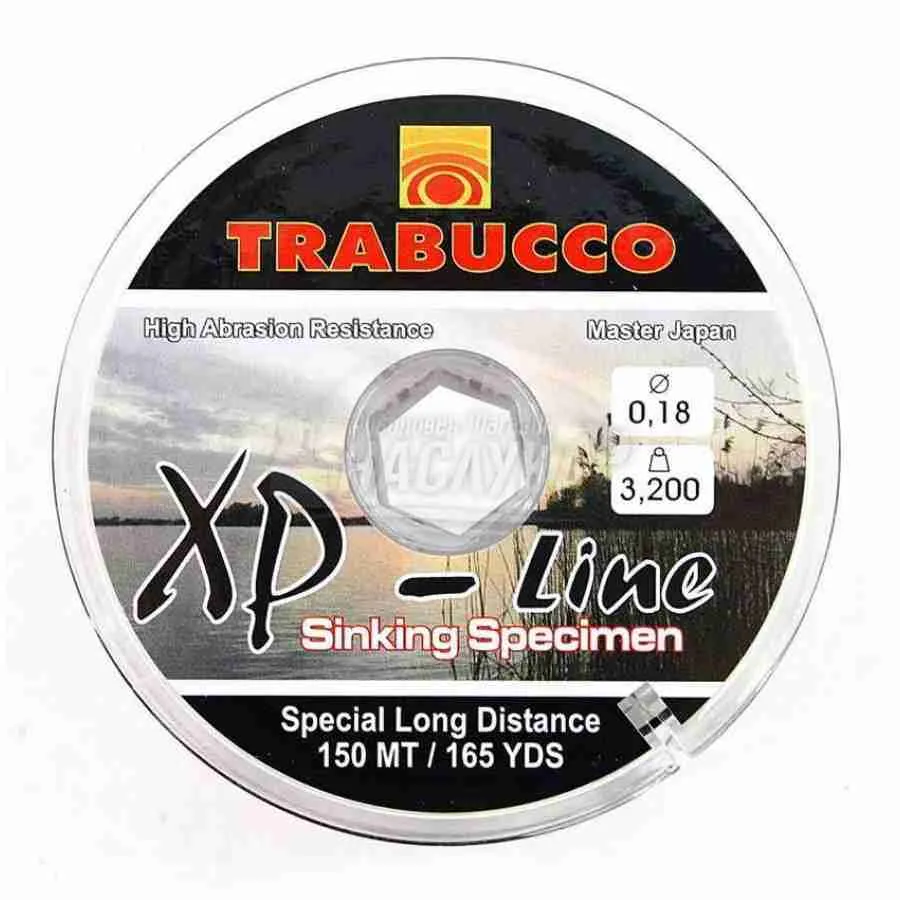
As a feeder line, three series of lines from Trabucco are mainly used. This is primarily a Trabucco T-Force feeder. And two universal series that are quite suitable for the feeder are Trabucco Force Sinking and Trabucco T-FORCE Competition Pro.
Advantages of feeder line from Trabucco
- low price;
- good rigidity and low elongation;
- “conditionally good” durability and abrasion protection. (There is no unequivocal opinion on this matter. It can be conditionally attributed to merit. It depends both on the chosen series and on the party.)
Flaws:
- high memory;
- the disease of all lines from Trabucco is an underestimated diameter. (Most monofilaments larger than 0.14 have an underestimated diameter indicated on the package, which may be less than practical by 0.05-0.2 mm);
- “conditionally poor” durability and protection against abrasion.
Lines from Suffix
The American company Suffix is known to fans of feeder fishing, primarily for its inexpensive and high-quality braided lines. But Sufix’s line of feeder monofilaments also has some good options to choose from.
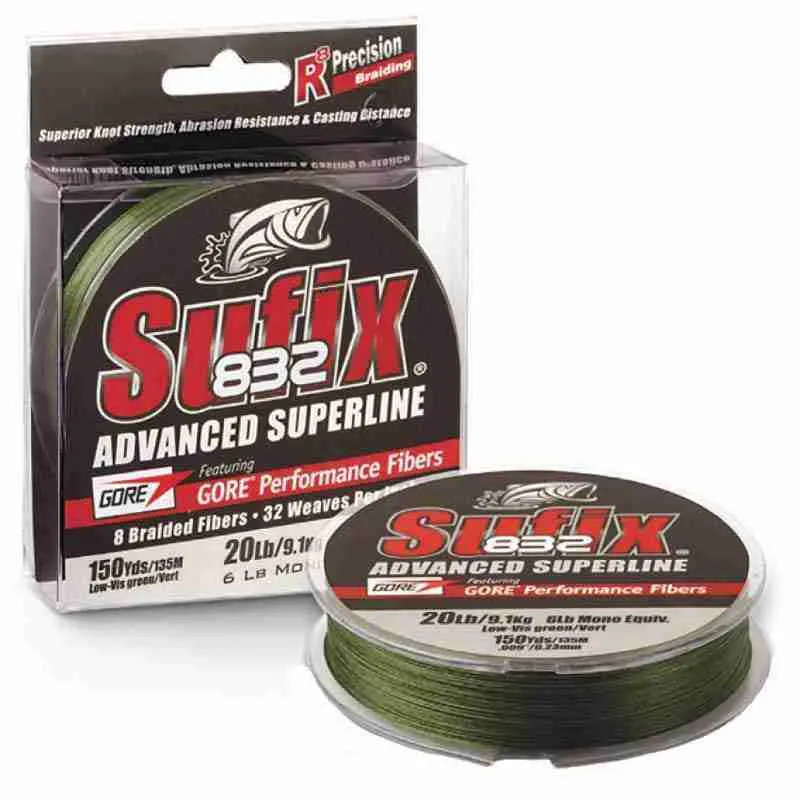
A series of monofilaments for a burgundy feeder Sufix feeder mono, the extensibility of which, according to the manufacturer, is close to zero. Sufix Specialist Carp also performed well.
Advantages of fishing line from Suffix
- low price;
- good wear resistance;
- slight stretch in the Sufix Specialist Carp series.
Flaws:
- some of the indicated diameters do not coincide with the real ones, both up and down;
- Sufix feeder mono is quite soft and not stiff enough for feeder fishing.
Feeder lines from Mikado
Such a well-known and popular manufacturer of fishing tackle as Mikado presents two special series for feeder lovers. These are black monofilaments from the new Mikado Sensei Feeder series and the well-known Mikado Feeder series.
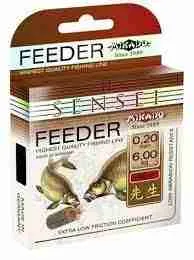
Advantages of fishing line from Mikado:
- Low price;
- Real rigidity is required for feeder fishing.
Flaws:
- A small selection of diameters in each series.
Feeder lines from Owner
Owner is, first of all, high-quality hooks - every angler knows this. But you can also find a good feeder monofilament from this manufacturer on the fishing line market. These are not special feeder lines, but more versatile ones, but they are also well used for feeder fishing. These are such series as: Owner Broad and Owner Broad Carp . Sold in coils of 100-300 meters.
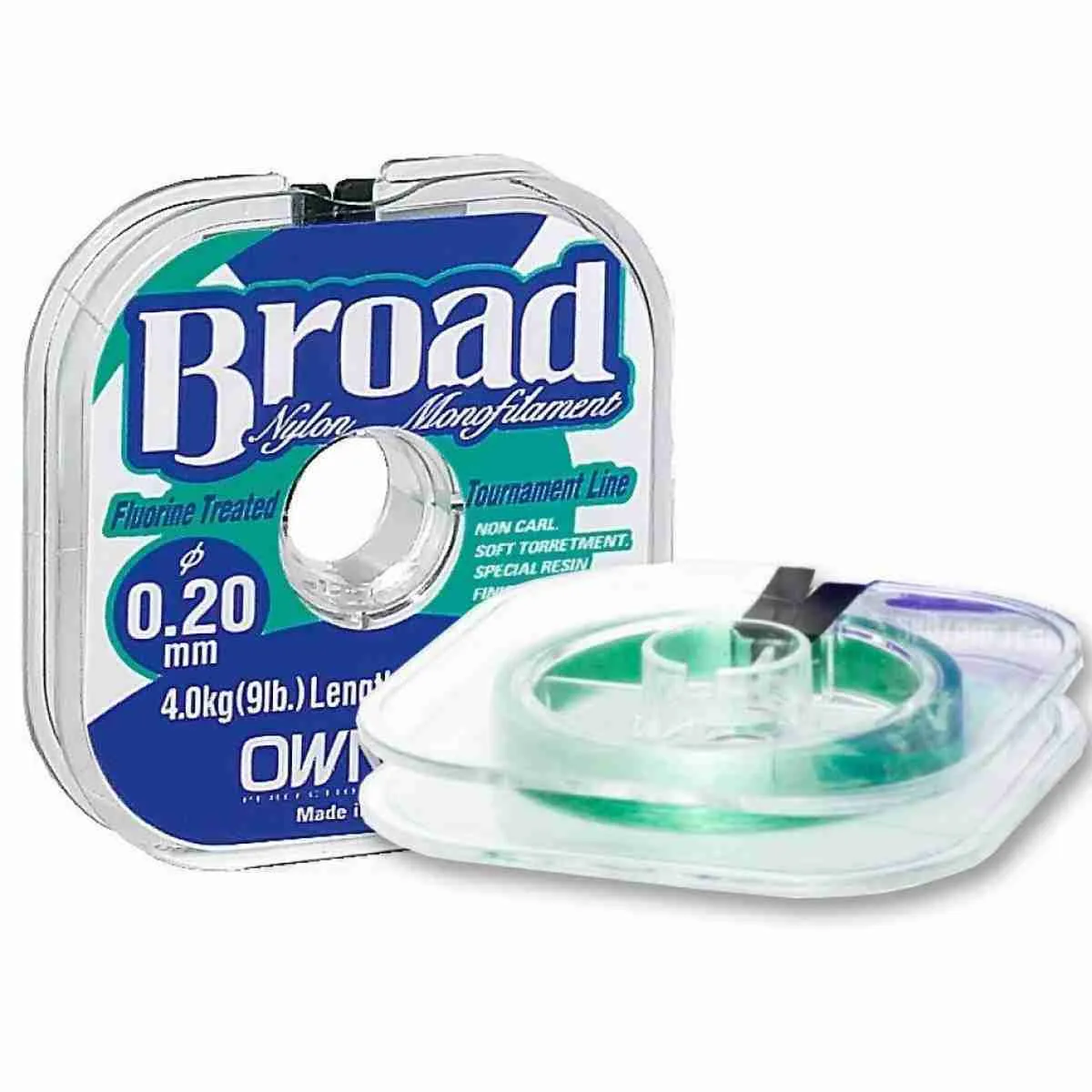
Advantages of fishing line from Owner:
- real low-line memory;
- average price;
- good camouflage color;
- good wear resistance.
Flaws:
- very soft fishing line, more suitable for leashes;
- high extensibility, it is better to catch at distances up to a maximum of 20-25 meters.
Feeder lines from Gamakatsu
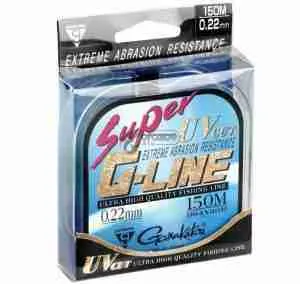
Another manufacturer of high-quality hooks offers us its line. As the Owner and Gamakatsu hooks, they “go side by side”, so they are very similar in the offered fishing lines. And they are about the same price. Like its main fish hook competitor, Gamakatsu does not have a dedicated feeder line. But for our fishing on the feeder, Super G-Line may well be suitable .
Advantages:
- low memory for twisting;
- good wear resistance;
- average price;
Flaws:
- stretch is high. Only suitable for close-range fishing.
Feeder lines from Colmic
Popular among anglers are fishing lines from the company Colmic. Let’s see what series can suit us for fishing on the feeder. One of the most popular is Race Sinking Lane. Its use for feeder fishing is not justified. This series has unacceptable extensibility for us.
For feeder fishing, such new series as Colmic Lurs Cosmo, Colmic Lurs Camouflage, and well-known to many anglers Colmic Fendreel K15 can be distinguished. The first has a greenish tint, and the second is multi-colored. The color of Lurs Camouflage changes approximately every 30 cm. Colmic Fendreel K15 has a fluorescent effect and a bright blue color, which is not familiar to many.
Advantages:
- good abrasion resistance;
- low memory;
- Colmic Lurs Cosmo and Colmic Lurs Camouflage are wound on bobbins using anti-torsion technology, which prevents twisting after rewinding onto a spool;
- average price;
Flaws:
- insufficient rigidity for feeder fishing. It should only be used at close range.
Feeder lines from Balsax
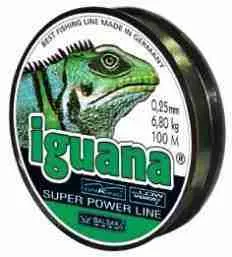
Many people know inexpensive monofilaments from Balsax. You can buy them everywhere and their range is very large. Two series can be used as a feeder line: Balsax Iguana and a special feeder line with less stretch American Fish. A pleasant low price cannot but please fishermen. But it makes sense to use it as a basis for a feeder only at short casting distances or when mastering the skills of feeder fishing.
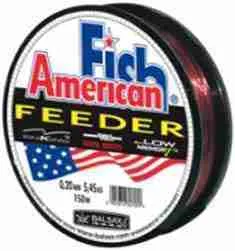
Advantages:
- low price.
Flaws:
- soft and highly stretchable.
Lines from Salmo
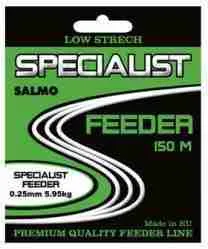
The Baltic company Salmo offers a special monofilament Salmo Professional feeder . It comes with eight different diameters from 0.2 to 0.4. It has a two-tone color of dark red and black. The colors alternate after about 40 cm. Moreover, if you check the tensile strength, then the breakage occurs mainly in the red section of the fishing line.
Advantages:
- low memory;
- low price;
Flaws:
- high stretch. At fishing distances of more than 30 meters, every second bite is almost invisible;
- the specified diameter of the fishing line is less than practical.
Monofilaments from Maver
Maver does not have a special feeder line in its range. But he recommends fishing lines such as Maver SLR and Dual Band. The Maver Dual Band is made by joining two monofilaments with different characteristics.
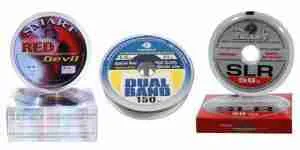
SLR line is softer and works well for leads. There is also a good Maver Red Devil series. In terms of stretchability, it is inferior to Dual Band but is also suitable for fishing up to 25 meters.
Advantages:
- the SLR and Dual Band series have very little stretch;
- high wear resistance and resistance to shells;
- very low memory;
Flaws:
- the practical diameter on some samples is larger than the specified one up to 0.2 mm.
Conclusion
Choosing the best line for feeder fishing can greatly enhance your overall angling experience. In this blog article, we have explored some popular brands like Trabucco, Shimano, Sufix, Mikado, Owner, Colmic, Balsax, Gamakatsu, Maver, and Salmo, all of which offer high-quality lines tailored for the demands of feeder fishing. Each brand comes with its own unique features, strengths, and advantages, making it essential to consider your personal angling preferences and fishing conditions before making a choice.
Remember, the best line for a feeder is one that suits your specific needs and fishing style. Whether you prioritize strength, durability, sensitivity, or low visibility, there is a line out there that will meet your expectations. Ultimately, it is crucial to conduct thorough research, read user reviews, and consult with experienced anglers to ensure you select the most suitable line for your feeder fishing adventures.
So, whether you opt for Trabucco’s advanced technology, Shimano’s reliability, Sufix’s abrasion resistance, Mikado’s versatility, or any other brand on the market, rest assured that investing in a high-quality feeder line will greatly enhance your chances of success and make your fishing trips more enjoyable.
Happy angling!
